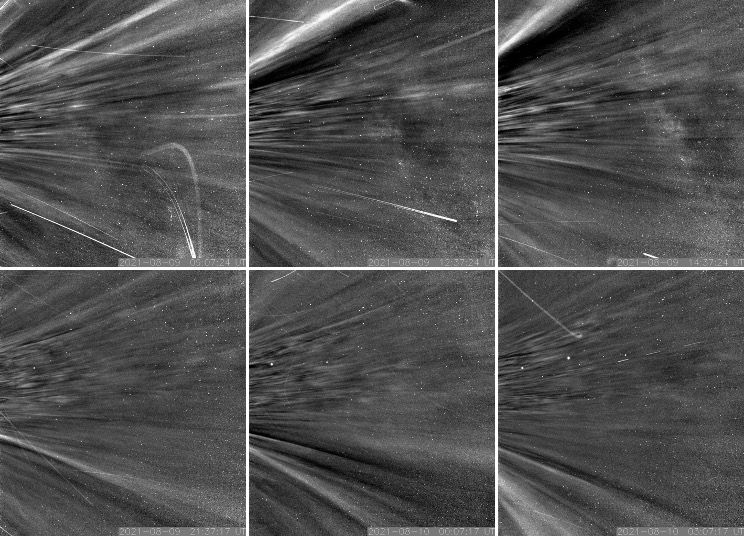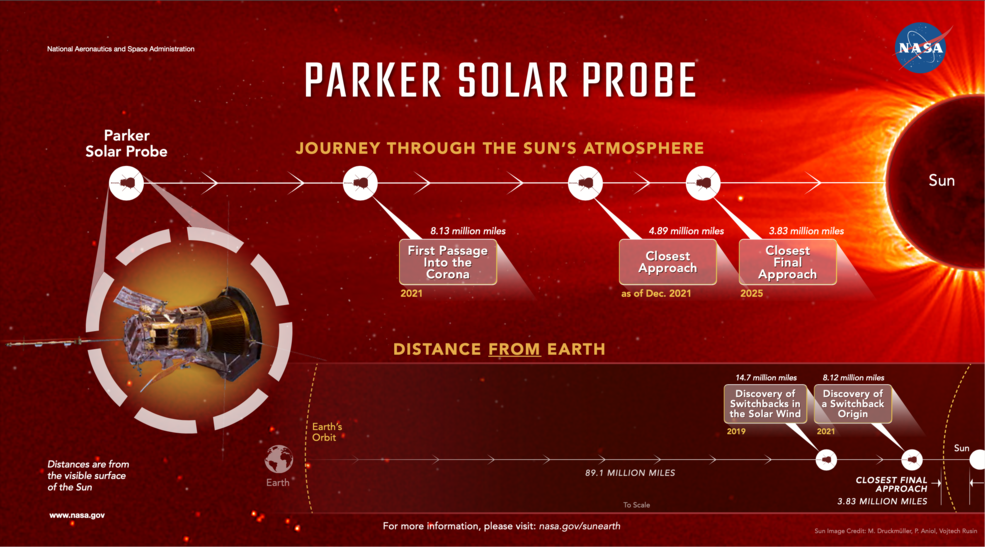
On December 14, NASA announced that the Parker Solar Probe had flown through the sun's upper atmosphere, thus becoming the first ever to do so. As the sun lacks a solid surface, this has been referred to as "touching" the sun.
The event happened on April 28, 2021, during the probe's eighth revolution around the sun. It's taken this long to confirm because the height of the Alfvén critical surface, the altitude at which the sun's atmosphere transitions into the solar wind, previously was unknown.
"Not only does this milestone provide us with deeper insights into our Sun's evolution and it's impacts on our solar system, but everything we learn about our own star also teaches us more about stars in the rest of the universe”, said Thomas Zurbuchen, the associate administrator for the Science Mission Directorate at NASA Headquarters in Washington in a NASA article.
Launched in 2018, the Parker Solar Probe is designed to explore the sun and shed light on its mysteries. By examining the sun's magnetic fields, scientists hope to better understand solar activity, such as solar winds, that affects life on earth.
As the probe dipped in and out of the sun's corona multiple times during the pass, it is now confirmed that the sun's corona isn't smooth and round like the earth's atmosphere, but jagged and spikey, shifting due to solar activity. The probe is planned to pass ever closer to the sun during its coming revolutions until 2025.

“It’s really exciting to see our advanced technologies succeed in taking Parker Solar Probe closer to the Sun than we’ve ever been, and to be able to return such amazing science(….)We look forward to seeing what else the mission discovers as it ventures even closer in the coming years”, said Joseph Smith, Parker program executive at NASA Headquarters.
Image: NASA/Johns Hopkins APL/Naval Research Laboratory




